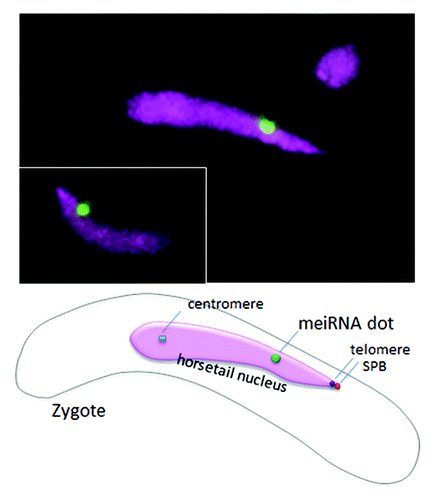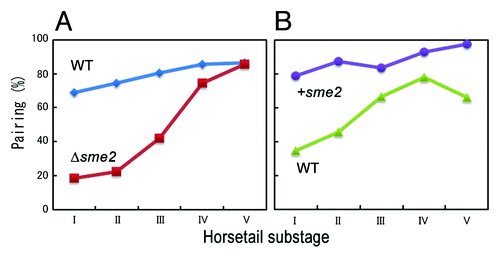Figures & data
Figure 1. RNA retained on the chromosome. The sme2 RNA transcripts form a single dot (green) on the chromosome (magenta) in elongated horsetail nuclei (also see the schematic drawing). No dots are formed in the round nuclei of vegetative cells (upper right cell).

Figure 2. Robust pairing is mediated by the sme2 sequence. (A) Pairing frequency at the sme2 locus during progression through the horsetail stage decreases with deletion of the sme2 sequence (Δsme2) compared with the wild-type (WT). (B) Pairing frequency at the ade8 locus increases with insertion of the sme2 sequence (+sme2) compared with the wild-type (WT).

Figure 3. Distinct functional domains of the sme2 transcript. The sme2 RNA transcript can be divided into two distinct domains: the 5′-portion of meiRNA-L, corresponding to meiRNA-S, and the 3′-extended region specific to meiRNA-L. Mei2 protein binds to the 5′-portion of meiRNA-L (meiRNA-S). Mmi1protein binds to DSR motifs, which are concentrated in the 3′-extended region of meiRNA-L. We speculate that as yet unknown proteins may bind to meiRNA-L and play a role in pairing.
